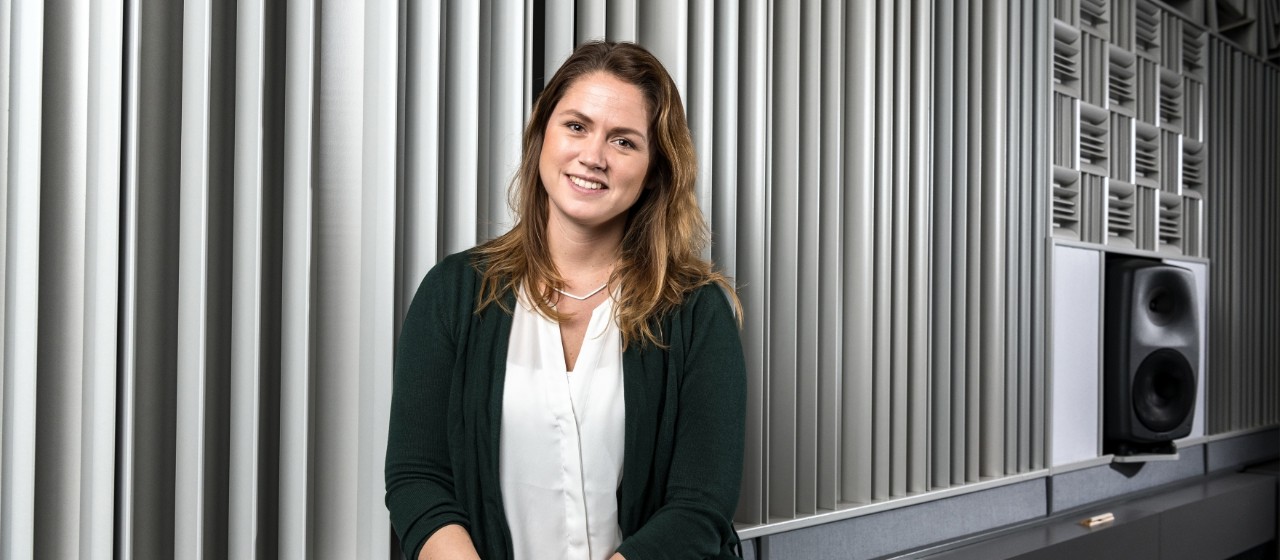
Anna listens to trucks
21 DECEMBER 2017
Sound can be measured but at the same time our perception of sound is very subjective. Especially our expectations of what a Scania should sound like. That’s what makes Anna Färm’s job so fascinating.
She has a trained ear and is a practised listener. And that instrument must be protected in noisy environments by means of ear plugs.
“In my line of work it’s essential to avoid hearing problems.”
As new Technical Manager for acoustics, one of her tasks is to advance method development in the field. But right now the focus is on ensuring that new-generation vehicles meet the specified sound requirements, which is the term Scania’s vehicle acoustics engineers prefer to “noise”. After that, there will be more intensive work on Scania’s future powertrains.
The premises change
In a longer perspective, the premises for acoustics change along with the trend towards more electric vehicles.
“In line with electrification it will be more about sound quality than sound level,” says Anna Färm. “With quiet powertrains we are more aware of other disturbing sounds in the cab and outside the vehicle. When we no longer have a masking powertrain, other sounds can be irritating.”
This means an increased focus on “softer” issues.
“Sometimes sound measurement is a blunt instrument; you have to listen and feel the sound, which is something we can do in our listening studio.”
For five years Anna Färm was linked to R&D as an industrial PhD candidate, a post that ceased when she gained her PhD last year. The focus of her research was preparing for whole-vehicle acoustic simulation.
“To a certain extent I began applying the results to simulations and to work on concepts for encapsulation. There I found a use for the practical elements of my research.”
Course awakened interest
Anna’s interest in acoustics arose from a course on sound and vibrations during her first degree at KTH’s Department of Vehicle Engineering.
“I thought it sounded like an exciting field. It is fairly complex, with quite a lot of exciting physics and mathematics – pretty cool.”
Broad professional field
For acoustic engineers there is a broad professional field – everything from building concert halls to planning urban development for a good sound environment. The latter is a field that Anna worked in prior to her research work.
“As Technical Manager I am property manager for acoustics. It’s my job to ensure that noise certification is complied with and that cab noise requirements are met; also that Scania competes in terms of sound.”
Her tasks also include increasing information on the importance of acoustics.
“This is not a classic vehicle field such as strength, but most of what we do is potentially significant for sound.”
Scania must not sound second-rate
The sound must chime with function. When you step on the accelerator there must be the right sound feedback and the right feeling. In a cheaper vehicle you could, perhaps, put up with a door that feels and sounds flimsy. But a Scania must not sound second-rate.
“More than anything we notice when the sound is poor, not when it’s good. Also, we hear sounds in different ways. Sound is also a matter of habit; someone who lives near the sea, for example, no longer hears it. We focus on a particular sound – the acoustics in a church sound good because that’s what we expect.”
As we said earlier, sound is subjective, and it can be perceived in many different ways. The most frequent question Anna is asked is what speaker to choose.
“I reply that first you have to decide on the price level, and then after that make sure you don’t listen to any more expensive speakers.”